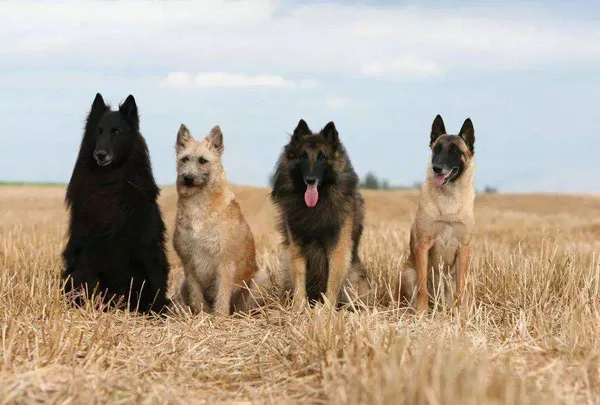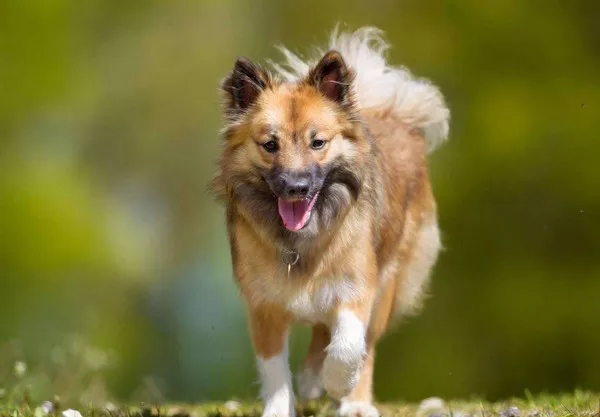The Alaskan Klee Kai, often referred to as a miniature Siberian Husky, is a breed of dog that has been gaining increasing popularity in recent years. Known for their striking appearance, which closely resembles a smaller version of the Siberian Husky, the Alaskan Klee Kai are beloved for their intelligence, agility, and friendly demeanor. However, despite their growing popularity, these dogs come with a hefty price tag. But why are Alaskan Klee Kai so expensive?
In this article, we will explore the factors that contribute to the high cost of owning an Alaskan Klee Kai. From the breed’s origins and rare status to its specific breeding and care requirements, there are several key reasons that explain the high cost of acquiring one of these dogs.
1. The Origins and History of the Alaskan Klee Kai
The Alaskan Klee Kai breed has a relatively short history compared to many other dog breeds, which contributes to its rarity. The breed was developed in the 1980s by Linda Spurlin, a breeder from Alaska, who wanted to create a smaller version of the Siberian Husky. The goal was to retain the Husky’s distinctive characteristics — including its striking appearance, intelligence, and energy level — while making it a more manageable size for families and individuals living in urban or suburban environments.
Linda Spurlin and her team carefully bred the Alaskan Klee Kai using Siberian Huskies, Alaskan Malamutes, and smaller breeds like the American Eskimo Dog and the Schipperke. The aim was to create a dog with the same beautiful wolf-like appearance and friendly temperament of a Siberian Husky, but in a compact and more versatile package.
Due to the breed’s relatively recent development and its limited number of original breeding pairs, the Alaskan Klee Kai remains a relatively rare breed. The rarity of the breed, combined with its specialized breeding program, is one of the primary reasons that these dogs are expensive.
2. Limited Availability and Breeding Challenges
One of the main factors that contribute to the high price of Alaskan Klee Kai is the limited availability of puppies. Unlike other more common breeds, the Alaskan Klee Kai is not mass-produced in large numbers. There are only a handful of reputable breeders who specialize in breeding Alaskan Klee Kai, and each litter of puppies is typically small, often consisting of just a few puppies at a time.
Breeding Alaskan Klee Kai can be a complex and challenging process. Due to their smaller size, they often face complications during pregnancy and delivery. The puppies are also known to be more susceptible to genetic health problems, so breeders must carefully select breeding pairs that are genetically compatible to avoid passing on these issues.
Additionally, because the breed is relatively new and still undergoing development, it is crucial for breeders to carefully maintain the integrity of the breed standard. This means that breeders must be very selective in choosing breeding dogs, which further limits the number of puppies available.
The combination of a small gene pool, the time-consuming and expensive breeding process, and the limited number of qualified breeders results in a low supply of Alaskan Klee Kai puppies. The laws of supply and demand dictate that when there is limited availability of a product, the price tends to rise — and this is certainly true for the Alaskan Klee Kai.
3. Breed Standards and Genetic Health
Alaskan Klee Kai are held to high breed standards, which further contribute to their cost. Reputable breeders strive to produce puppies that adhere closely to the ideal traits described in the breed standard. This includes physical characteristics like coat color, ear shape, and size, as well as temperament and intelligence.
In addition to meeting these physical standards, Alaskan Klee Kai breeders must also take great care to ensure the genetic health of their dogs. While the breed is generally healthy, it is prone to certain genetic disorders, such as patellar luxation (a condition in which the kneecap dislocates) and progressive retinal atrophy (a condition that leads to blindness). As a result, breeders must conduct extensive health testing on both the sire and dam (mother and father) before mating to ensure that they do not pass on these genetic conditions to the puppies.
Genetic testing, health screening, and following breed-specific protocols can be costly for breeders, but they are essential for maintaining the health and integrity of the breed. These additional expenses are passed on to the consumer, contributing to the high price of Alaskan Klee Kai puppies.
4. Training and Socialization
Alaskan Klee Kai are known to be highly intelligent dogs, but they can also be independent and stubborn. This means that early socialization and training are critical for ensuring that the dog develops into a well-adjusted, obedient companion.
Because of their intelligence and independent nature, Alaskan Klee Kai may require more effort and patience when it comes to training. Owners need to be committed to providing consistent, positive reinforcement-based training to help their dog develop good behavior patterns. While this is not unique to the Alaskan Klee Kai — many intelligent breeds require extra attention during training — it is important to note that owners of Alaskan Klee Kai may need to invest more time and sometimes money into professional training services.
Many Alaskan Klee Kai owners choose to hire professional trainers to ensure their dog is properly socialized and well-behaved, particularly because these dogs can be prone to being wary or aloof with strangers. Ensuring that an Alaskan Klee Kai is well-trained and well-socialized adds another layer of cost to the overall ownership experience.
5. Living Requirements and Exercise Needs
Alaskan Klee Kai are energetic dogs that require plenty of exercise to remain healthy and happy. They are naturally agile and athletic, so they thrive in environments where they can engage in activities like running, hiking, or participating in agility sports. Without adequate physical and mental stimulation, Alaskan Klee Kai can become bored, which can lead to destructive behavior.
For potential owners, this means that it is important to consider the time, effort, and financial commitment involved in providing adequate exercise and mental stimulation for an Alaskan Klee Kai. This breed typically requires at least 30-60 minutes of exercise each day, which might include walks, playtime in a secure yard, or interactive games like fetch or tug-of-war.
Some Alaskan Klee Kai owners also choose to engage in dog sports, such as agility trials, obedience competitions, or sledding. Participating in these activities can be rewarding for both the dog and the owner, but it also requires additional investment in training, equipment, and event fees. The cost of keeping an Alaskan Klee Kai active and healthy can add up quickly, contributing to the overall expense of owning this breed.
6. High Demand and Popularity
The Alaskan Klee Kai’s appearance, resembling the iconic Siberian Husky but in a smaller size, has made it a highly sought-after breed. The breed’s popularity has been fueled by social media and celebrity endorsements, with many people attracted to the idea of owning a “miniature Husky.” As a result, there has been a steady increase in demand for Alaskan Klee Kai puppies.
Unfortunately, the increased demand has not led to a corresponding increase in supply. The relatively small number of breeders producing Alaskan Klee Kai puppies means that prices remain high despite the growing popularity of the breed. This high demand and low supply dynamic has driven up the cost of acquiring a puppy.
Additionally, because Alaskan Klee Kai are still considered a “rare” breed, many people are willing to pay a premium for the privilege of owning one. The high demand, combined with the factors mentioned earlier — such as limited availability, breeding challenges, and health testing — results in a significant price tag for Alaskan Klee Kai puppies.
7. Other Costs of Ownership
Beyond the initial cost of purchasing an Alaskan Klee Kai, there are several ongoing expenses that owners should consider. These costs include:
- Healthcare: Alaskan Klee Kai, like all dogs, require regular veterinary care, including vaccinations, annual check-ups, and preventative treatments for fleas, ticks, and heartworms. While the breed is generally healthy, there may be occasional health issues that require veterinary attention.
- Grooming: The Alaskan Klee Kai has a thick, double-layer coat that sheds seasonally. Regular grooming is necessary to keep the coat in good condition and to minimize shedding. Some owners may choose to have their dog professionally groomed, which can add to the overall cost.
- Food and Supplies: Alaskan Klee Kai are active dogs that require high-quality dog food to maintain their health and energy levels. The cost of food and other supplies, such as toys, bedding, and training tools, can add up over time.
Conclusion
In conclusion, there are several factors that contribute to the high price of Alaskan Klee Kai puppies. From their rare and relatively new status to the complexities of breeding, genetic testing, and maintaining the breed standard, Alaskan Klee Kai are not a cheap investment. Additionally, the breed’s intelligence, exercise needs, and the ongoing costs of ownership further contribute to the overall expense.
For those who are willing to invest the time, effort, and money required to properly care for an Alaskan Klee Kai, the reward is a loyal, intelligent, and active companion. However, potential owners should carefully consider the financial commitment involved before bringing one of these beautiful dogs into their home.
Related Topics:























